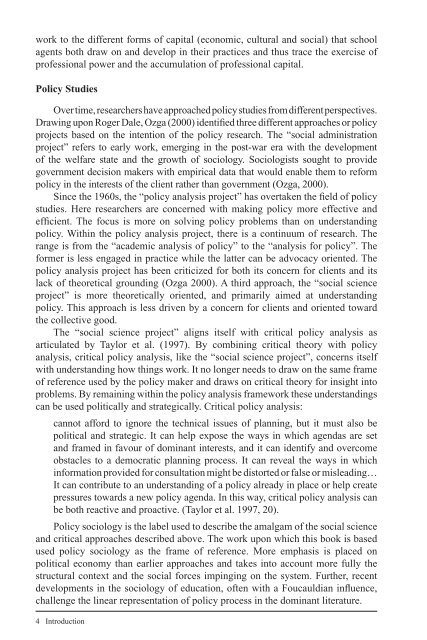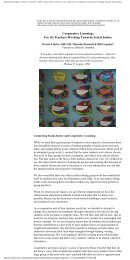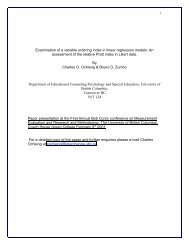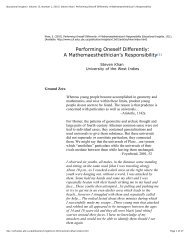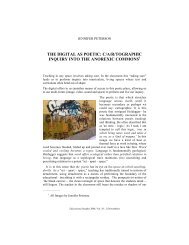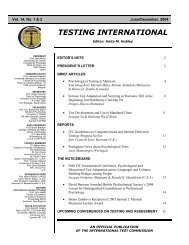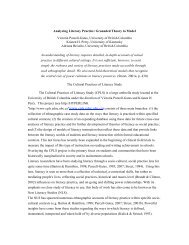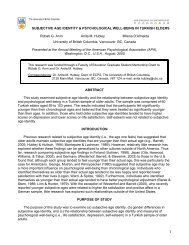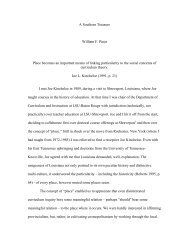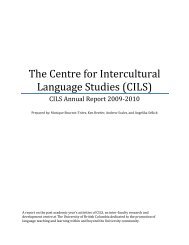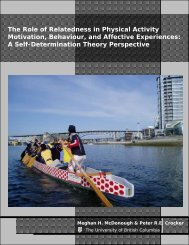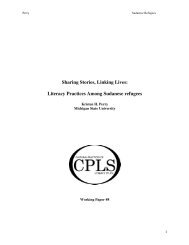The evolution of professionalism - Centre for Policy Studies in ...
The evolution of professionalism - Centre for Policy Studies in ...
The evolution of professionalism - Centre for Policy Studies in ...
Create successful ePaper yourself
Turn your PDF publications into a flip-book with our unique Google optimized e-Paper software.
work to the different <strong>for</strong>ms <strong>of</strong> capital (economic, cultural and social) that school<br />
agents both draw on and develop <strong>in</strong> their practices and thus trace the exercise <strong>of</strong><br />
pr<strong>of</strong>essional power and the accumulation <strong>of</strong> pr<strong>of</strong>essional capital.<br />
<strong>Policy</strong> <strong>Studies</strong><br />
Over time, researchers have approached policy studies from different perspectives.<br />
Draw<strong>in</strong>g upon Roger Dale, Ozga (2000) identifi ed three different approaches or policy<br />
projects based on the <strong>in</strong>tention <strong>of</strong> the policy research. <strong>The</strong> “social adm<strong>in</strong>istration<br />
project” refers to early work, emerg<strong>in</strong>g <strong>in</strong> the post-war era with the development<br />
<strong>of</strong> the welfare state and the growth <strong>of</strong> sociology. Sociologists sought to provide<br />
government decision makers with empirical data that would enable them to re<strong>for</strong>m<br />
policy <strong>in</strong> the <strong>in</strong>terests <strong>of</strong> the client rather than government (Ozga, 2000).<br />
S<strong>in</strong>ce the 1960s, the “policy analysis project” has overtaken the fi eld <strong>of</strong> policy<br />
studies. Here researchers are concerned with mak<strong>in</strong>g policy more effective and<br />
effi cient. <strong>The</strong> focus is more on solv<strong>in</strong>g policy problems than on understand<strong>in</strong>g<br />
policy. With<strong>in</strong> the policy analysis project, there is a cont<strong>in</strong>uum <strong>of</strong> research. <strong>The</strong><br />
range is from the “academic analysis <strong>of</strong> policy” to the “analysis <strong>for</strong> policy”. <strong>The</strong><br />
<strong>for</strong>mer is less engaged <strong>in</strong> practice while the latter can be advocacy oriented. <strong>The</strong><br />
policy analysis project has been criticized <strong>for</strong> both its concern <strong>for</strong> clients and its<br />
lack <strong>of</strong> theoretical ground<strong>in</strong>g (Ozga 2000). A third approach, the “social science<br />
project” is more theoretically oriented, and primarily aimed at understand<strong>in</strong>g<br />
policy. This approach is less driven by a concern <strong>for</strong> clients and oriented toward<br />
the collective good.<br />
<strong>The</strong> “social science project” aligns itself with critical policy analysis as<br />
articulated by Taylor et al. (1997). By comb<strong>in</strong><strong>in</strong>g critical theory with policy<br />
analysis, critical policy analysis, like the “social science project”, concerns itself<br />
with understand<strong>in</strong>g how th<strong>in</strong>gs work. It no longer needs to draw on the same frame<br />
<strong>of</strong> reference used by the policy maker and draws on critical theory <strong>for</strong> <strong>in</strong>sight <strong>in</strong>to<br />
problems. By rema<strong>in</strong><strong>in</strong>g with<strong>in</strong> the policy analysis framework these understand<strong>in</strong>gs<br />
can be used politically and strategically. Critical policy analysis:<br />
cannot af<strong>for</strong>d to ignore the technical issues <strong>of</strong> plann<strong>in</strong>g, but it must also be<br />
political and strategic. It can help expose the ways <strong>in</strong> which agendas are set<br />
and framed <strong>in</strong> favour <strong>of</strong> dom<strong>in</strong>ant <strong>in</strong>terests, and it can identify and overcome<br />
obstacles to a democratic plann<strong>in</strong>g process. It can reveal the ways <strong>in</strong> which<br />
<strong>in</strong><strong>for</strong>mation provided <strong>for</strong> consultation might be distorted or false or mislead<strong>in</strong>g…<br />
It can contribute to an understand<strong>in</strong>g <strong>of</strong> a policy already <strong>in</strong> place or help create<br />
pressures towards a new policy agenda. In this way, critical policy analysis can<br />
be both reactive and proactive. (Taylor et al. 1997, 20).<br />
<strong>Policy</strong> sociology is the label used to describe the amalgam <strong>of</strong> the social science<br />
and critical approaches described above. <strong>The</strong> work upon which this book is based<br />
used policy sociology as the frame <strong>of</strong> reference. More emphasis is placed on<br />
political economy than earlier approaches and takes <strong>in</strong>to account more fully the<br />
structural context and the social <strong>for</strong>ces imp<strong>in</strong>g<strong>in</strong>g on the system. Further, recent<br />
developments <strong>in</strong> the sociology <strong>of</strong> education, <strong>of</strong>ten with a Foucauldian <strong>in</strong>fl uence,<br />
challenge the l<strong>in</strong>ear representation <strong>of</strong> policy process <strong>in</strong> the dom<strong>in</strong>ant literature.<br />
4 Introduction


